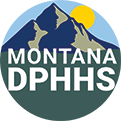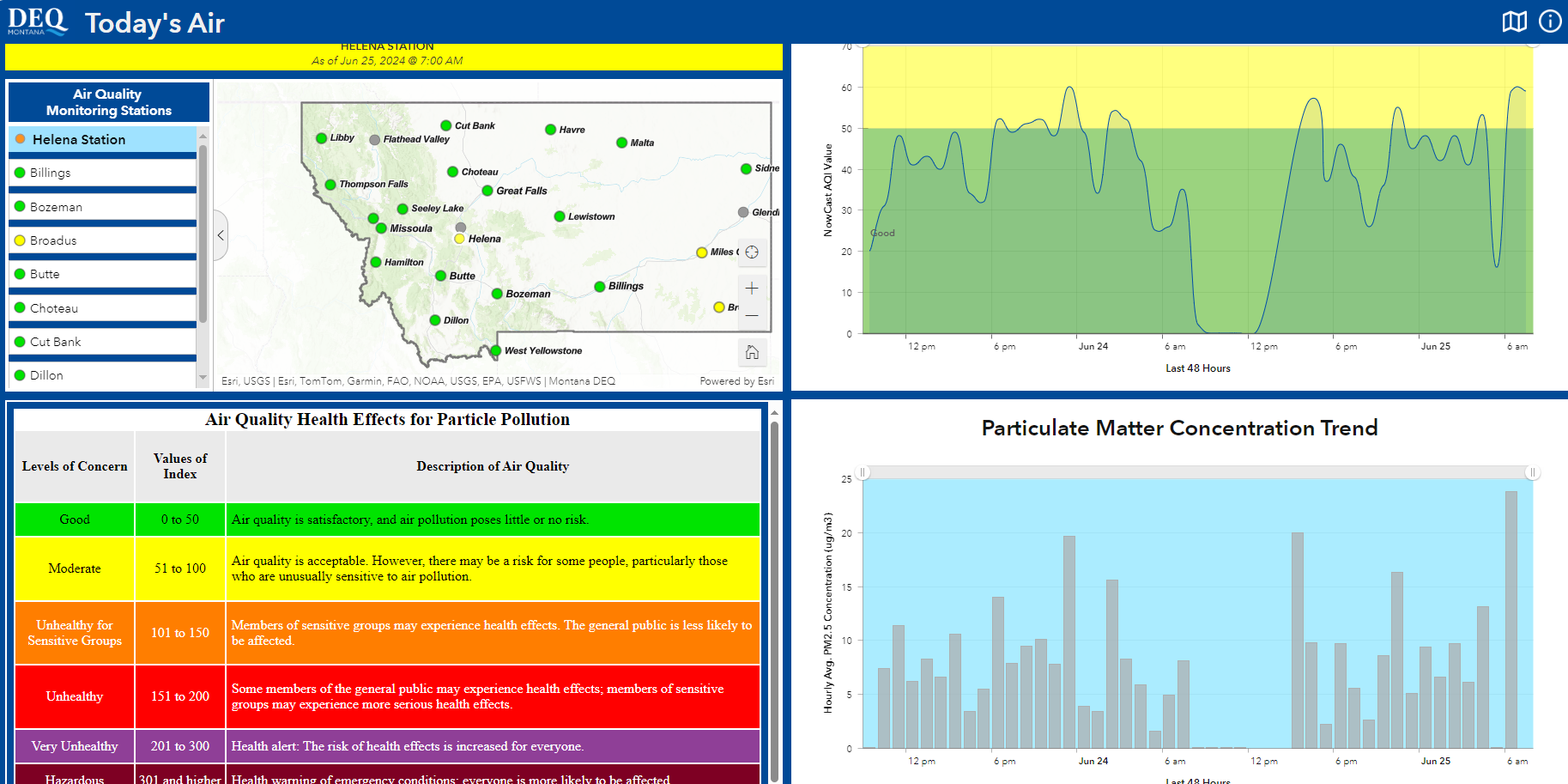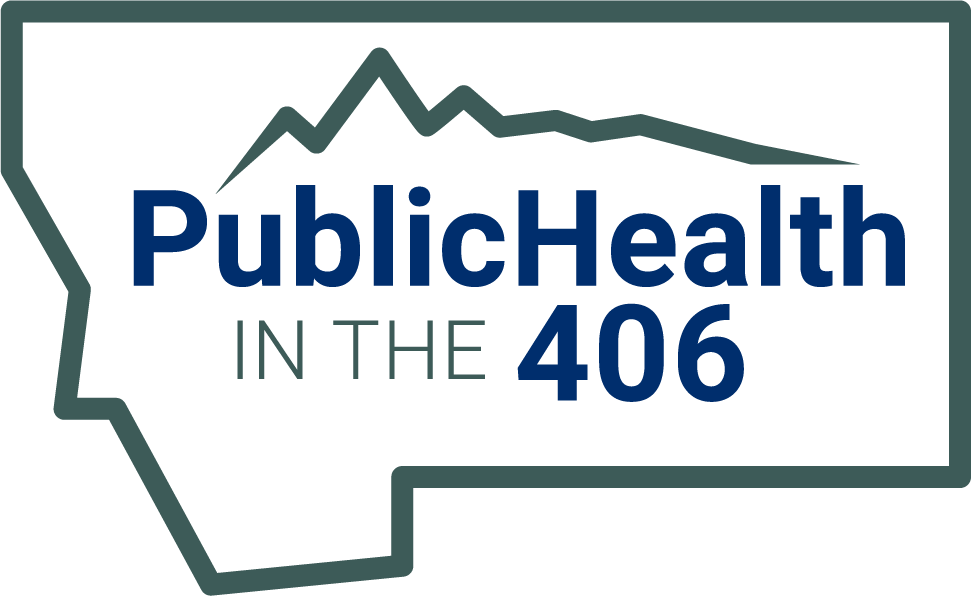Outdoor Air Quality
PLEASE NOTE: The Montana Department of Health and Human Services (DPHHS) provides valuable health information regarding air quality to help you stay informed and protect your health. However, DPHHS does not regulate air quality issues. If you need to file a complaint or report an air quality concern, please visit the Montana Department of Environmental Quality (DEQ) Regulation Department. The best way to report a complaint is to contact DEQ Enforcement at 406-444-0379 or DEQ or file an online complaint submission at https://deq.mt.gov/about/reportpollution.
Montana’s outdoor air quality is shaped by its vast landscapes, changing climate, and seasonal events. Wildfire smoke is one of the biggest challenges, especially during the summer and early fall. In winter, temperature inversions can trap pollutants close to the ground, leading to poor air quality in valleys. In addition, many Montanans are affected by spring and summer pollen. Breathing polluted air can cause coughing, trouble breathing, and make conditions like asthma or heart disease worse. Understanding how to determine outdoor air quality and knowing what steps to take when it drops to unhealthy levels help us to safely enjoy all of the outdoor recreation that comes with living under the big sky.
Air Quality by Season
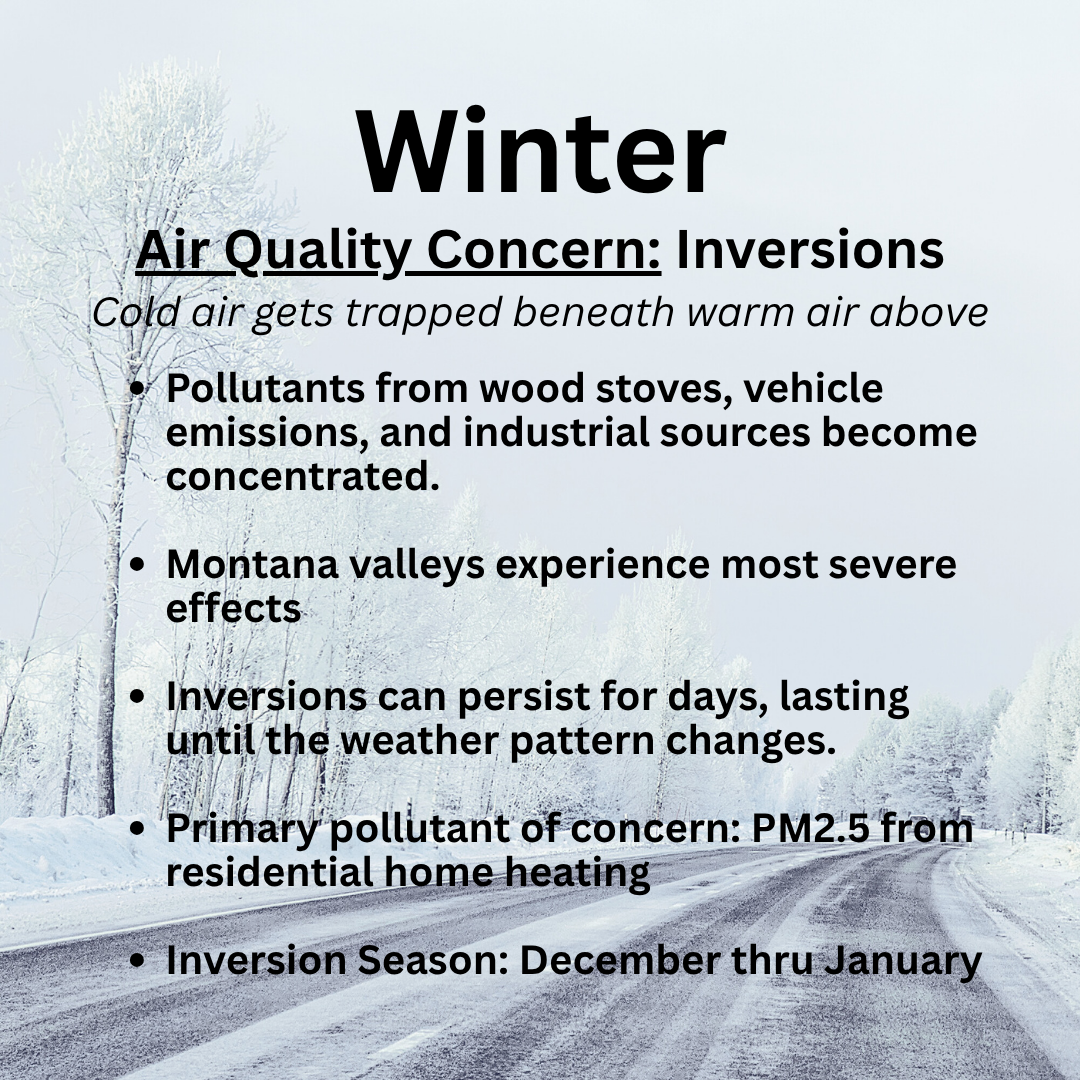
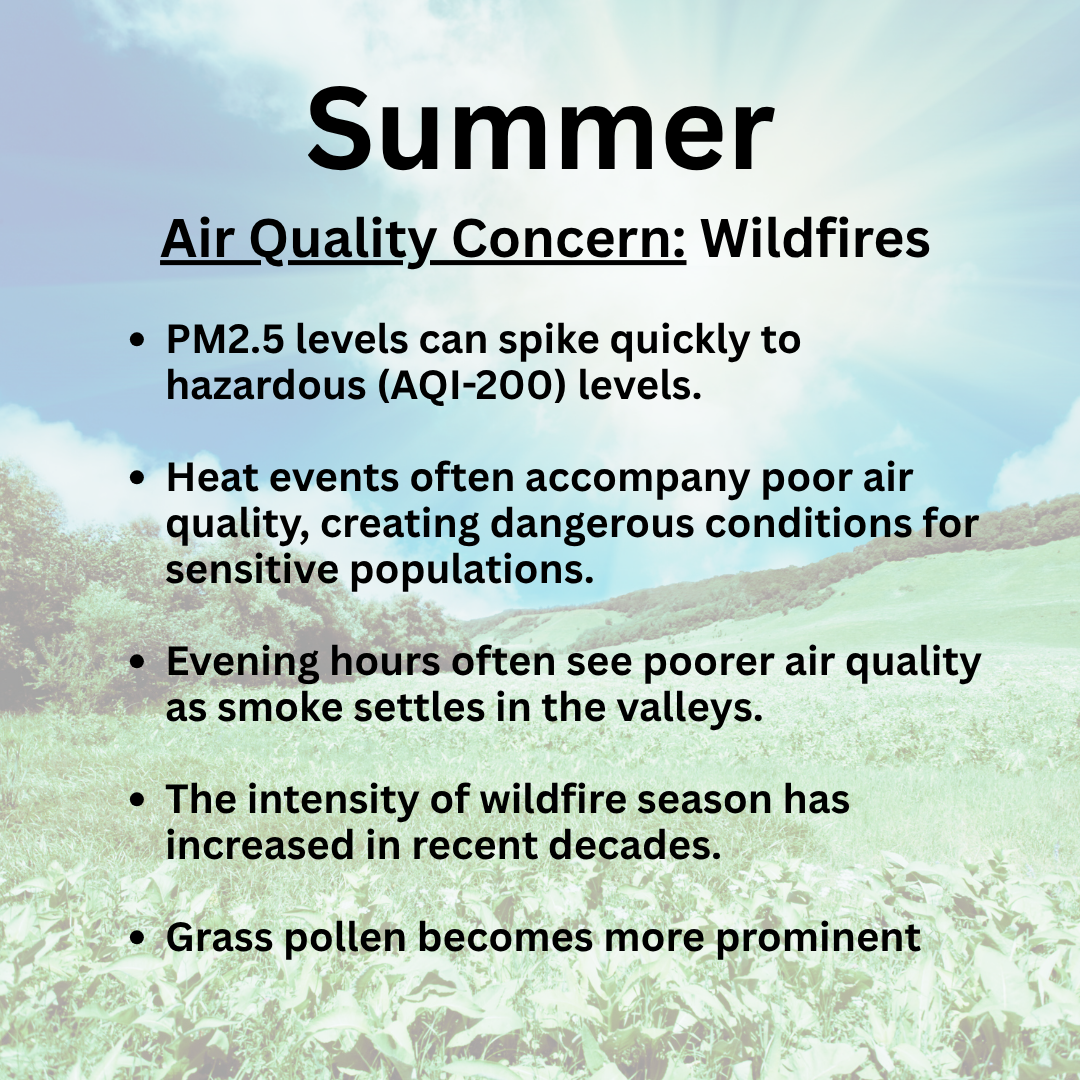
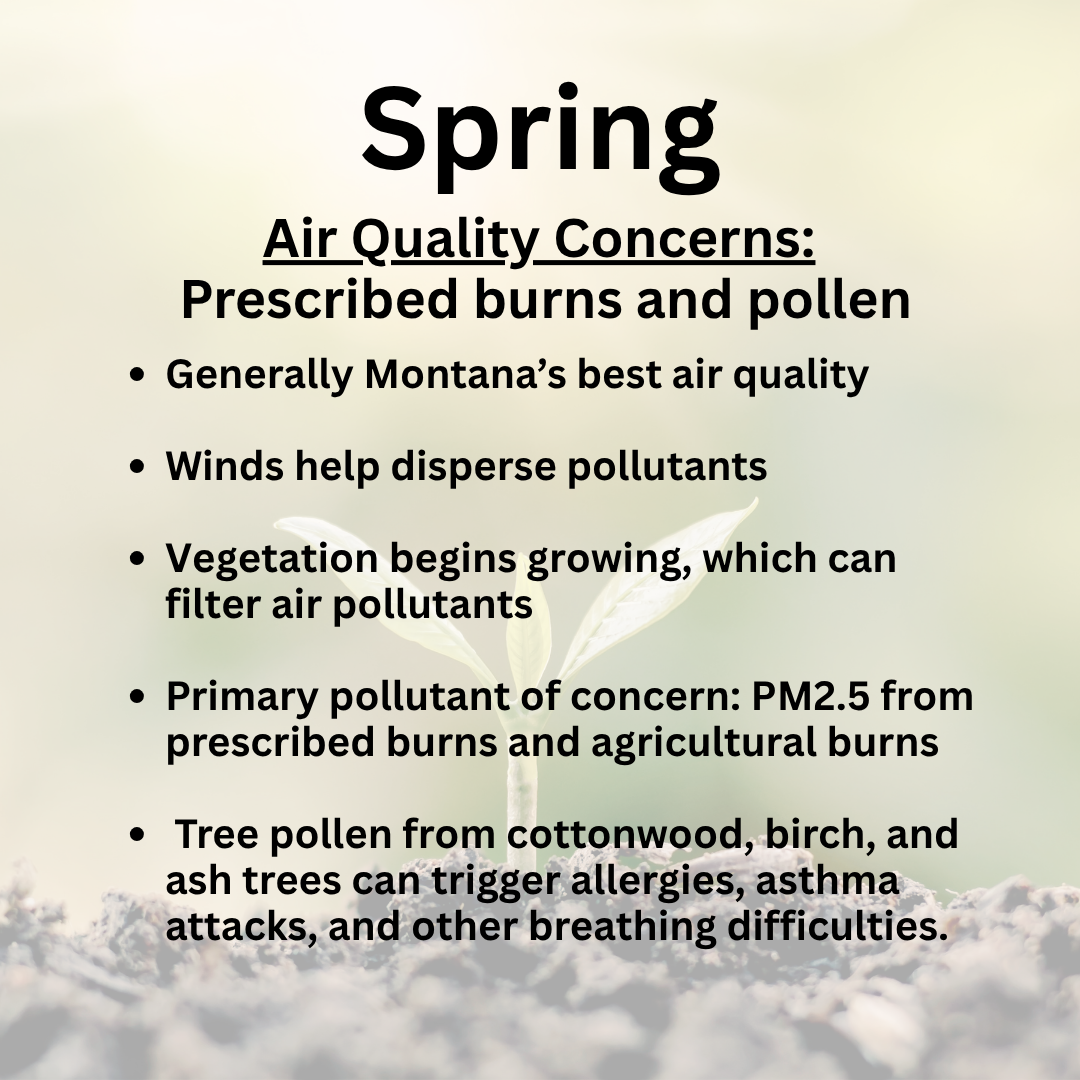
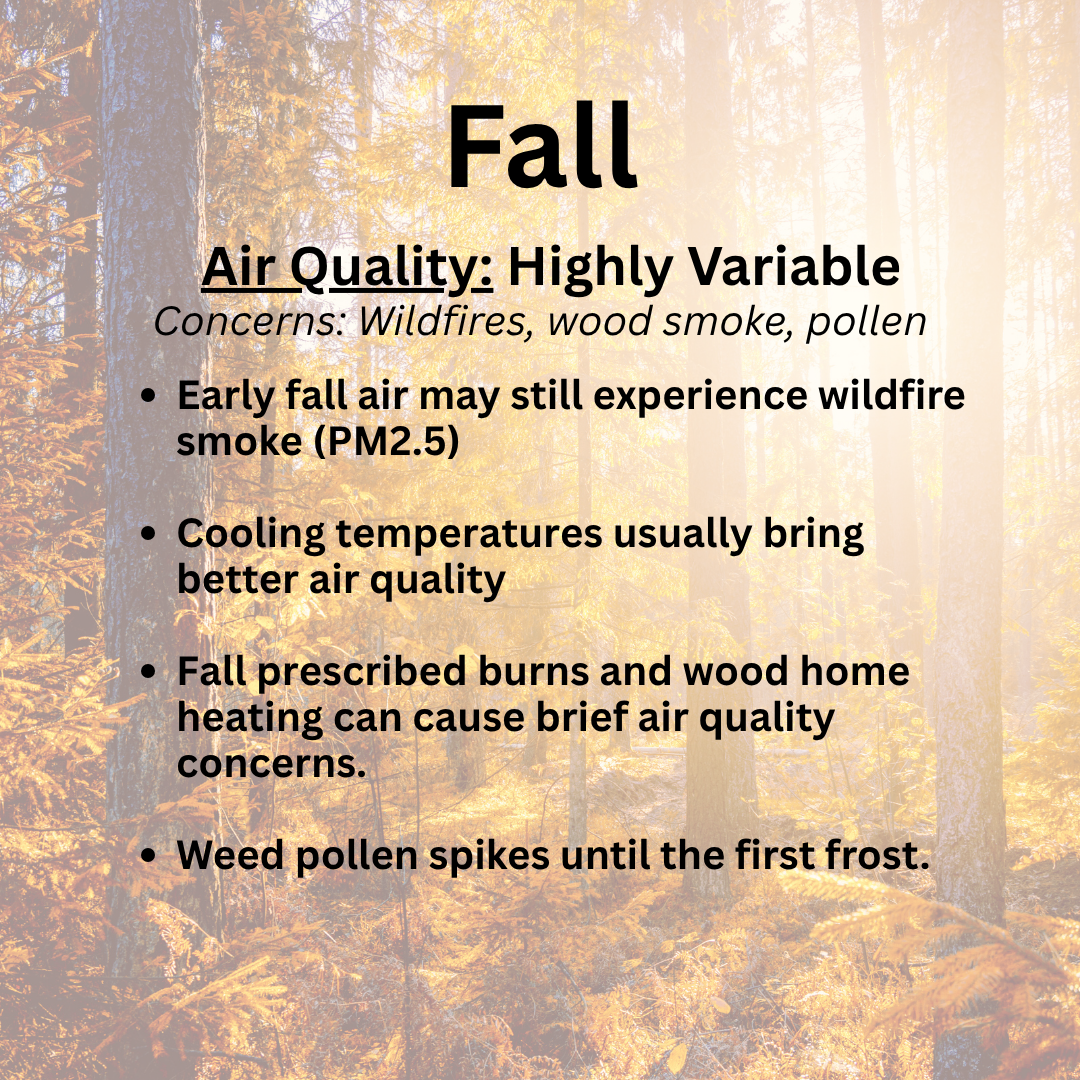
Key Pollutants in Montana
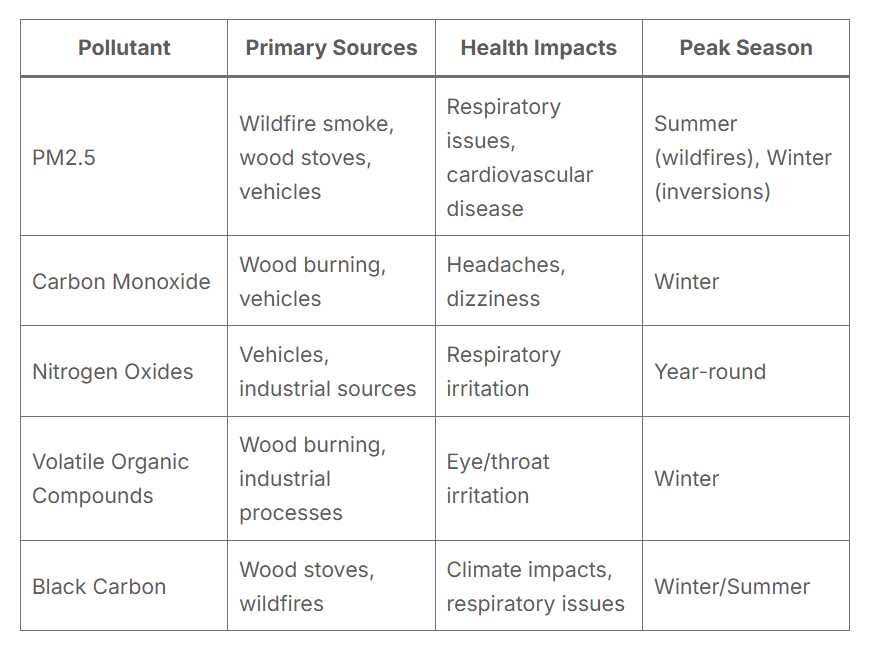
Table Citation: MLCT.org Staff. (2025, June 6). What is causing the poor air quality in Montana? Montana League of Cities and Towns. Retrieved from https://www.mlct.org/what-is-causing-the-poor-air-quality-in-montana/
Tips to Protect You and Your Family
- Stay informed. Air quality reports are available online and on local media outlets. If you don't have access to technology, look outside. If visibility has decreased to less than three miles, air quality is unhealthy for all populations.
- Change your clothes and take a shower if you have spent time outdoors in times of low air quality. Pollen and particulate matter can get on your skin, hair and clothing.
- Stay in contact with your health care provider. Take your asthma/allergy medications as prescribed.
- If air quality is poor, avoid exercising outside or limit duration and intensity. Consider moving your workouts indoors. In addition, llimit the time that your children are playing outdoors.
- Avoid burning wood or trash. Burning firewood and trash are major sources of particulate pollution in Montana.
- Do your part by using less energy at home. Using electricity creates more air pollution outdoors. For more information, check out the US Environmental Protection Agency's tips for conserving energy at home.
- Follow DPHHS recommendations for clean indoor air to protect your health in your home as well.
Current Air Quality Conditions
What Pollutants are Measured by Montana's Air Quality Index?
Particulate matter smaller than 2.5 microns (PM2.5) is the most significant air pollutant of concern in Montana. These microscopic particles are about one-quarter the size of a typical dust particle, allowing them to travel deep into the lungs and even enter the bloodstream. This can lead to both immediate and long-term health effects for all Montanans.
Certain groups are especially vulnerable to the health impacts of PM2.5 exposure, including:
- People with asthma, COPD, or other heart and lung conditions
- Pregnant women
- Older adults
- Children
- Outdoor workers
Wildfire smoke is the leading source of PM2.5 in Montana. During the summer, levels can soar to 10–20 times higher than the EPA’s recommended thresholds, often persisting for days or even weeks. In winter, PM2.5 levels can also rise due to temperature inversions and widespread use of wood-burning stoves for home heating.
Other contributors to PM2.5 pollution include:
- Vehicle emissions
- Fossil fuel combustion
- Industrial emissions from factories and power plants
Reducing exposure to PM2.5 is critical for protecting public health—especially during wildfire season and winter months.
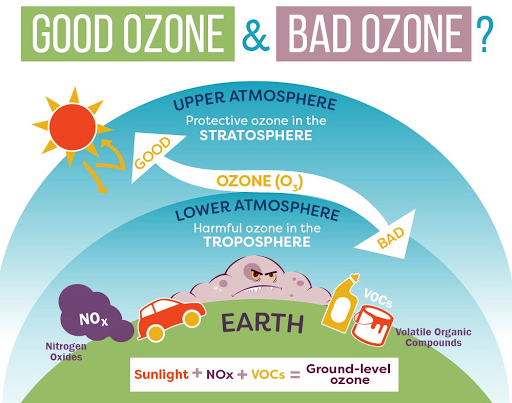
High in the sky, the ozone layer helps protect us from the sun’s harmful ultraviolet (UV) rays. But near the ground, ozone is a harmful air pollutant. It forms when sunlight reacts with gases from cars, factories, power plants, and gas stations. Breathing in ground-level ozone can make it hard to breathe, raise the risk of lung infections, and cause heart problems—especially for children, older adults, and people with health issues. Ozone levels are usually highest on hot, sunny afternoons when there’s little wind.
